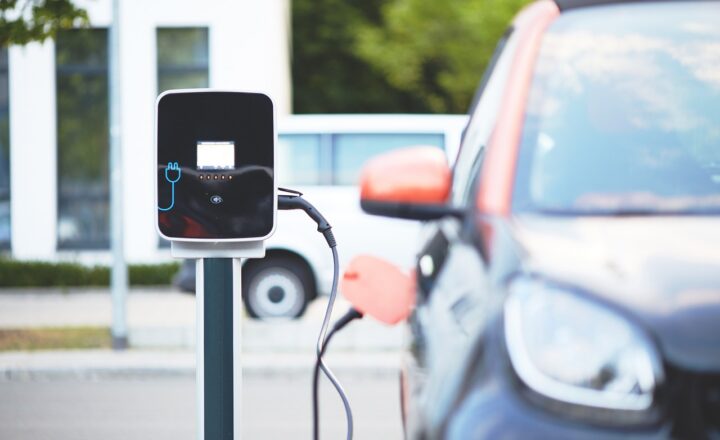Why Some Cities Are Embracing Car-Free Zones and Pedestrian Spaces
November 12, 2024

In recent years, a growing number of cities around the world have taken bold steps to embrace car-free zones and pedestrian-friendly spaces. Cities like Paris, Oslo, Barcelona, and Bogotá have joined the movement to reduce the number of vehicles in urban centers, thereby promoting healthier, more sustainable living environments for their residents. This article explores the reasons behind this shift, its benefits, and the challenges that come with implementing car-free initiatives.
1. The Case for Car-Free Zones
Car-free zones refer to designated areas in a city where motor vehicles are restricted or completely banned. The primary aim of these zones is to prioritize public spaces for walking, cycling, and social interactions, allowing people to experience their cities in a new and engaging way.
Several factors have driven cities to consider car-free initiatives:
- Air Quality Improvement: Cars are a significant source of air pollution. By reducing vehicle traffic, cities can lower emissions and ultimately improve air quality, which benefits public health and the environment.
- Reduction in Traffic Congestion: Car-free zones can help alleviate congestion by limiting the number of vehicles on the road. This often leads to shorter travel times for those who still need to drive or use public transportation.
- Enhanced Urban Livability: Prioritizing pedestrians enhances the overall quality of life in urban areas. Car-free spaces encourage walking, biking, and outdoor activities, which contribute to healthier and more vibrant communities.
- Promotion of Sustainable Transportation: Creating pedestrian spaces encourages the use of eco-friendly transportation options such as bikes, scooters, and public transit, which align with sustainability goals.
2. Benefits of Car-Free Initiatives
The shift towards car-free zones offers numerous benefits:
2.1 Healthier Communities
Reducing car traffic leads to fewer accidents and injuries, creating safer streets for pedestrians and cyclists. Additionally, with less pollution, residents may experience fewer respiratory issues and better overall health.
2.2 Vibrant Public Spaces
Car-free zones enable more space for outdoor dining, street performances, markets, and community events, fostering a sense of community and engagement among residents and visitors.
2.3 Economic Benefits
Studies indicate that pedestrian-friendly spaces can boost local businesses. With more foot traffic, shops and restaurants benefit from increased sales. For instance, areas like the pedestrianized streets of Barcelona have seen revitalization in their local economies.
2.4 Environmental Impact
Car-free zones contribute to lowering greenhouse gas emissions and noise pollution, leading urban areas to meet their climate action pledges. Many cities aim to become carbon neutral, making these initiatives part of comprehensive environmental strategies.
3. Challenges in Implementing Car-Free Zones
Despite the advantages, transitioning to car-free areas comes with its challenges:
3.1 Resistance from Residents and Businesses
Some residents and business owners may resist car-free policies, fearing loss of accessibility and revenue. Communication and engagement are essential to demonstrate the long-term benefits to the community.
3.2 Infrastructure Changes
Implementing car-free zones often requires significant changes to existing infrastructure. This may include establishing bike lanes, improving public transport, and redesigning public spaces—all of which require funding and planning.
3.3 Ensuring Accessibility
It is crucial to ensure that car-free initiatives do not exclude those who might rely on cars due to mobility issues. Cities need to consider how to accommodate all residents while creating a pedestrian-friendly environment.
4. Successful Examples of Car-Free Initiatives
Cities worldwide have embraced the car-free philosophy successfully:
4.1 Oslo, Norway
Oslo’s city center has transformed into a vehicle-free zone, allowing for enhanced public spaces that are vibrant and accessible. The city has seen increased cycling and walking, alongside declining car traffic.
4.2 Paris, France
In Paris, the “Paris Respire” initiative closes certain streets to cars on Sundays, encouraging walking and cycling. The city is also rolling out permanent pedestrian spaces in areas like the historic Marais district.
4.3 Bogotá, Colombia
Bogotá has been a pioneer in pedestrianization. The city’s “Ciclovía” program closes major roads on Sundays for cyclists and pedestrians, promoting active lifestyles and community interactions.
5. The Future of Car-Free Cities
As urban populations continue to rise and the impacts of climate change become increasingly urgent, the trend towards car-free zones and pedestrian spaces is likely to grow. The future of cities may lean towards integrating green spaces, prioritizing public transport, and creating more accessible environments for all.
Urban planners and policymakers will need to work collaboratively with communities to design sustainable cities that embrace innovative approaches, reshaping our cities for people rather than cars.
Conclusion
Car-free zones and pedestrian-friendly spaces are not just buzzwords; they represent a vital shift towards more sustainable, healthier, and vibrant urban environments. As cities adapt to the changing needs of their populations and the pressing realities of climate change, the move toward pedestrian-centric urban planning can create spaces where individuals can thrive. While challenges remain, the enduring benefits of such initiatives offer a compelling reason for cities to continue down this path. By prioritizing people over vehicles, we can collectively envision a more sustainable future for our urban landscapes.







